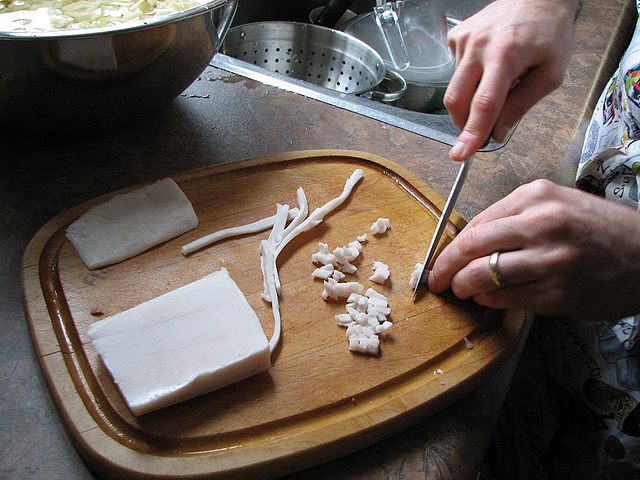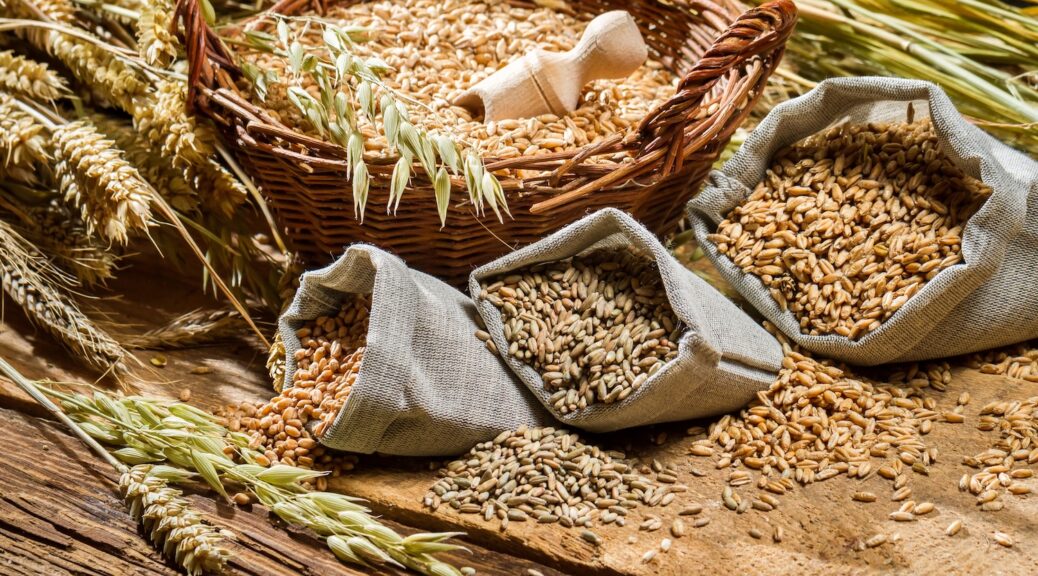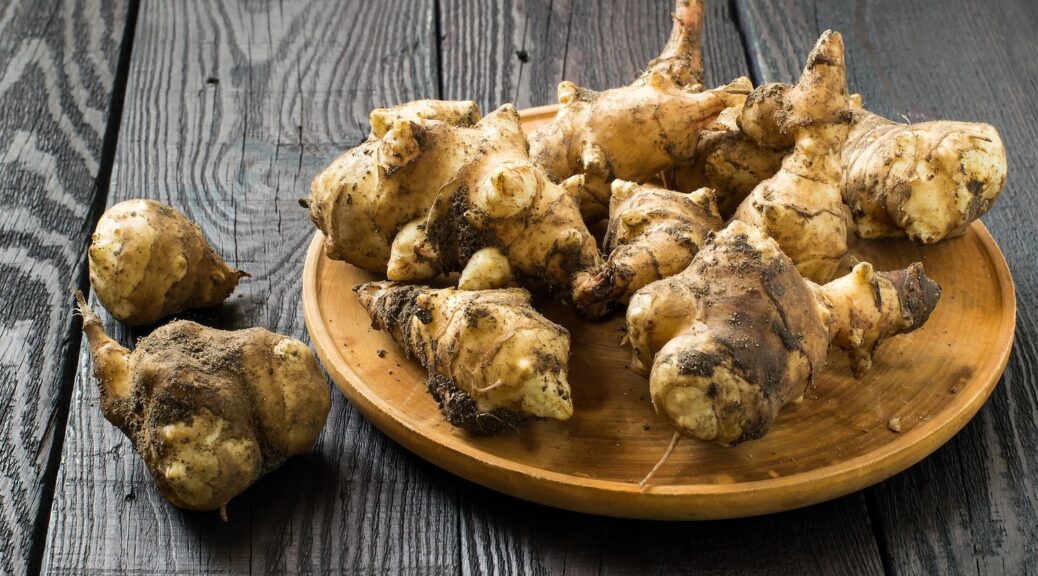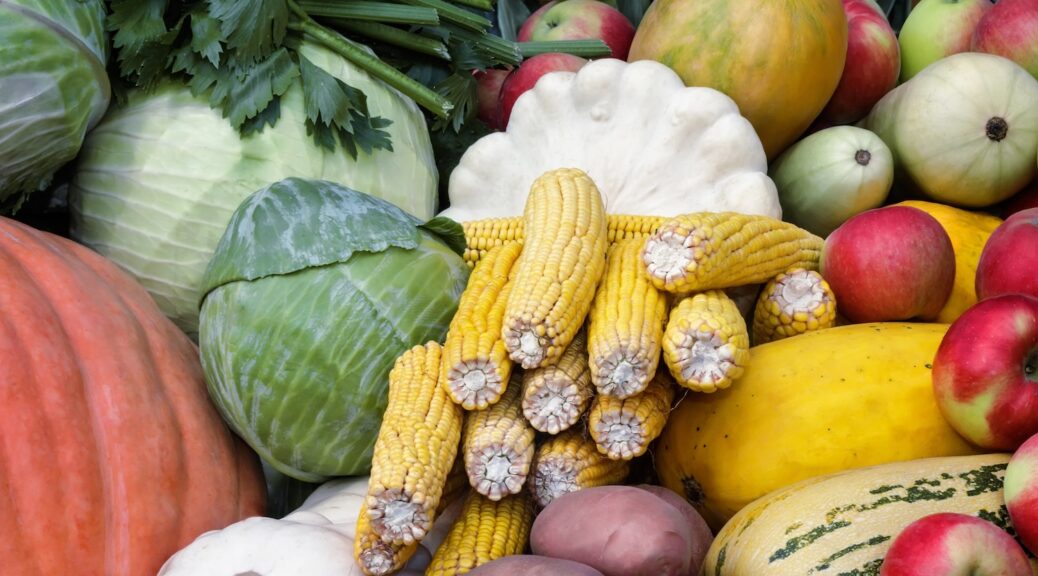Larding and Daubing Lean Meat
“Many kinds of meat which are very lean and dry are improved by the addition of some kind of fat. Larding is accomplished by cutting strips of salt pork lengthwise with the rind two inches long and one quarter inch wide, and with aid of the larding needle, drawing these pieces through the surface of the meat, taking a stitch an inch long and a quarter inch deep. The tenderloin or fillet of beef, the thick part of the leg…







